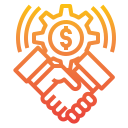
Optimizing Customer Journey Mapping: Turn Moments into Momentum
Chosen theme: Optimizing Customer Journey Mapping. Welcome to a practical, story-rich deep dive into mapping every moment that matters, removing friction with empathy and evidence, and turning scattered touchpoints into a seamless experience. Subscribe and share your biggest journey challenge—we’ll dig in together.
See the Journey Clearly: From First Touch to Loyal Advocacy
Define Stages and Emotional States
Name the stages precisely—discover, consider, try, onboard, use, expand, advocate—and annotate the emotions customers should and do feel. This contrast exposes friction, reveals intention, and guides teams to redesign moments that build trust instead of tension.
Surface Moments of Truth with Evidence
Treat every hypothesis like a draft until real evidence speaks. Combine call transcripts, ticket tags, session replays, and survey verbatims to validate your map. When one dataset whispers, triangulate with another until patterns shout with confidence and clarity.
Align Metrics to Stages
Give each stage a metric that matters: activation rate, time-to-value, repeat usage frequency, expansion propensity, and advocacy signals. Tie metrics to questions the map poses, so analysis becomes action, not just a dashboard that politely blinks in silence.
Jobs-to-be-Done Interviews
Ask customers what progress they hoped to make, not which features they clicked. Maya told us she “hired” the product to feel in control before big presentations. That insight reshaped onboarding entirely, emphasizing confidence-building checklists over generic product tours.
Edge Cases and Accessibility
Design for the edges to improve the center. Consider low bandwidth, assistive technologies, cognitive load, and language barriers. When we mapped constraints explicitly, error pathways became gentle detours, and conversion rose because more people could succeed the first time.
Triggers, Fears, and Constraints
Trace the moment a journey begins—a deadline, recommendation, or failed attempt—and list fears and constraints. Money, time, approval, and uncertainty all shape behavior. Mapping these forces helps you offer the right reassurance, at the right moment, in the right channel.
Data-Driven Optimization: Instrument, Experiment, Iterate
Define a clean event taxonomy, consistent identifiers, and privacy-safe properties mapped to stages. Document success criteria, edge events, and timestamps. When instrumented thoughtfully, the map becomes living telemetry, clarifying which moments lift delight and which quietly leak momentum.
Omnichannel Orchestration: Consistency Without Sameness
Channel Handoffs that Feel Seamless
Capture context and carry it forward. Use deep links, CRM histories, and conversation summaries so customers never repeat themselves. When a chat becomes a call or a store visit, continuity signals respect—and respected customers return, recommend, and forgive small mistakes.
Content and Timing Personalization
Personalization is timing plus relevance. Trigger nudges from verified intent signals, not guesswork. Align messages to the stage and channel the customer chose, not the one you prefer, and watch helpfulness replace interruption across your journey map’s busiest intersections.
Service Recovery Loops
Map failure states deliberately. Prewrite empathetic responses, offer proactive credits, and close the loop with follow-up. A resolved issue can create stronger loyalty than a flawless flow, if your recovery feels human and the map ensures no apology arrives too late.
Collaboration and Governance: Make the Map the Meeting
Assign stage owners, clearly. Product, marketing, support, data, and design each hold responsibilities, but one person stewards the stage. When accountability is explicit, requests stop ricocheting across teams and improvements move from backlog into customers’ hands faster.
Collaboration and Governance: Make the Map the Meeting
Establish monthly journey councils, weekly incident reviews, and quarterly map refreshes. Bring real customer stories, not just charts. When leaders ask, “What does the map say?” the organization listens to customers even when they’re not in the room to speak.
Collaboration and Governance: Make the Map the Meeting
Keep the map editable yet governed. Use shared canvases, structured comments, and version history. Link to dashboards and research repositories. Changes should be easy to propose and impossible to lose, so improvements accumulate like a well-kept scientific lab notebook.
From Map to Movement: Roadmaps, Quick Wins, and Storytelling
01
Rank opportunities using RICE or a simple impact–effort matrix tied to map stages. Favor changes that reduce friction early and amplify value moments later. Transparent criteria build trust and keep teams aligned when priorities inevitably compete for attention.
02
A coffee subscription brand cut onboarding copy in half, clarified shipping expectations, and added a first-brew tip card. Trial-to-paid jumped eighteen percent in two sprints. Small, targeted fixes against the map create momentum your roadmap can ride for months.
03
Tell a before-and-after story anchored in one customer’s journey. Use quotes, screenshots, and the map as a backdrop. When people feel the struggle and the relief, they ship with urgency. Share your favorite customer quote—we might feature it in our next issue.
Join our mailing list
